Leica X Vario: Close-Up Lens Experiments - Part 2
Introduction | A few Remarks | Photos | Evaluation Photos | Combining Achromat and B+W Lens, Comparison with Ricoh GXR A12-50 | Conclusions
Archive
This page presents a new addition (February 2014) to my Leica X Vario equipment, a Marumi +5 achromat. It discusses how the achromat fares in comparison with the close-up lenses that I already owned and with the Ricoh GXR A12-50 macro lens.
Note: Page Close-up Lens Experiments - Summary offers a summary of my close-up experiments with the Leica X Vario. Close-up tests without close-up lenses are presented on page Leica X Vario: Close-Up Experiments - No Lens. Close-up tests with close-up lenses and some comparisons are presented on page Leica X Vario: Close-Up Lens Experiments - Part 1. Close-up tests with a +10 achromat, which is part of a Dörr slide duplicator, are presented on page Leica X Vario: Close-Up Lens Experiments - Part 3.
Introduction
Since the maximum magnification that the Leica X Vario can achieve is about 0.2 at a focal length of 70 mm (equiv.), I soon bought a cheap set of close-up lenses (+1, +2, +4) to achieve more magnification. After first tests in which I verified that close-up lenses are useful, I also bought a B+W +5 close-up lens for better image quality. On page Close-Up Lens Experiments - Part 1, I present my investigations into what magnifications can be achieved and how the lenses fare overall and also in comparison with a dedicated macro lens (Ricoh GXR A12-50mm). One of my take-aways - that I do not report on this page - is that I do not need the "fine-grained" steps that the close-up lens set offers (+1, +2, +4). Thus, one or two +5 close-up lenses would suffice for me (leading to magnifications of about 0.4 for one lens, and 0.5 in combination).
In the l-camera-forum, dkpetersborough demonstrated how well Leica achromats - even in combination of up to 3-4 - can be used for macro photography with the Leica X Vario. He wrote:
- Leitz Elpro VIb achromatic c/u lenses (dating from 1965 and originally designed for the Leicaflex R lenses); each Elpro is 4.92 diopter and during previous trials with the X1 up to 4 of them could be stacked - but 3 is sufficient to fill the frame on the X Vario using the 70mm setting.
Admittedly, those Leitz achromats are rather expensive and obviously no longer manufactured. So I asked myself, whether there is any manufacturer, from which I could buy achromats. Achromats are based on a two-lens design and definitely have a number of advantages over simple close-up lenses (particularly, regarding corner sharpness). By accident, I stumbled over the Marumi achromats, which are distributed in Germany by enjoyyourcamera.com. Since these start at a filter thread of 52 mm and since I had no idea of what their quality would be, I did not pursue this track any further...
This changed, however, when X Vario user Klaus-Michael Heib e-mailed me that he had bought a Marumi achromat and that he was very pleased with the results. In February 2014, I bought a Marumi achromat +5, and since it has a minimal filter thread of 52 mm, I also bought a 43-52 mm Quenox step-up ring.
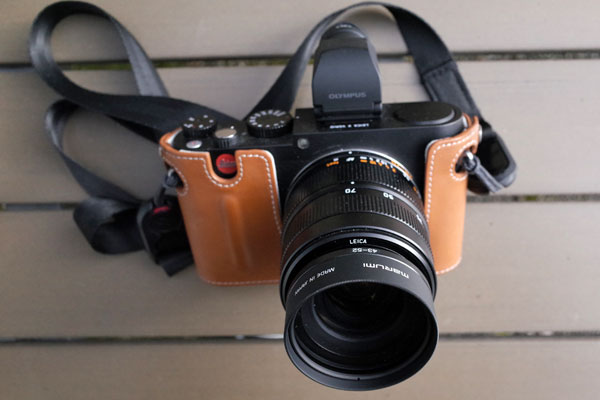
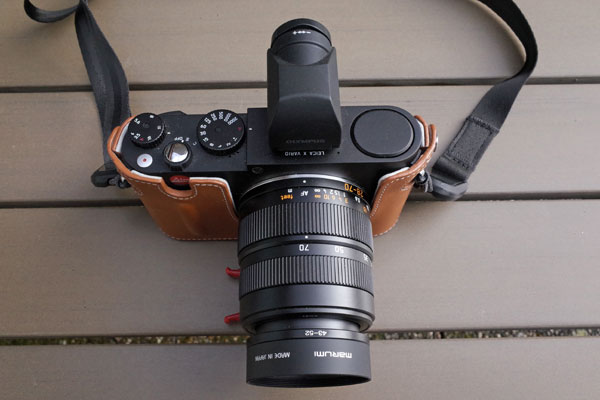
Photos: Leica X Vario with Marumi +5 achromat and 43-52 mm step-up ring
A few Remarks...
Compared with a close-up lens, an achromat is large and heavy. A step-up ring even adds to its size and weight, as is needed for the Marumi +5 achromat.
The step-up ring presents a problem that I would like to point out. At a focal length of around 50 mm (equiv.), the X Vario's lens assumes its shortest length. With the achromat and step-up ring mounted, the step-up ring hits the lens body here, and you cannot zoom any further, irrespective of whether you zoom from wide to tele or vice versa. If you have such a setup, too, please do not use any force to zoom further.
Note: You can unscrew the lens-step-up ring combo a little bit in order to zoom further.
If you use the achromat with step-up ring together with, for example, the B+W +5 close-up lens in order to achieve an even higher magnification, there is no such problem, because this close-up lens (and my others as well) slips "into" the lens body (like the front of the lens).
Together with the step-up ring, the Marumi +5 achromat provides a slightly higher magnification than my B+W +5 close-up lens (and a +4/+1 combination of my close-up lens set). This may be due to the fact that the step-up ring moves the achromat a few mm away from the lens.
I have the step-up ring permanently attached to the achromat. Luckily, both fit together into the achromat's case...
In the following, I will will show some example photos, some test photos, and briefly discuss whether the achromat is really so much better than my other close-up lenses.
Photos
The following sample photos taken with the Marumi +5 achromat demonstrate the kinds of macro photos that you can use it for on a Leica X Vario (however, photos taken with any other +5 close-up lens would look similar at this size...).
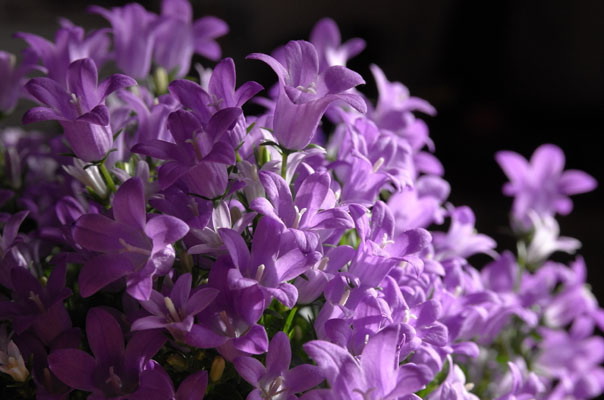

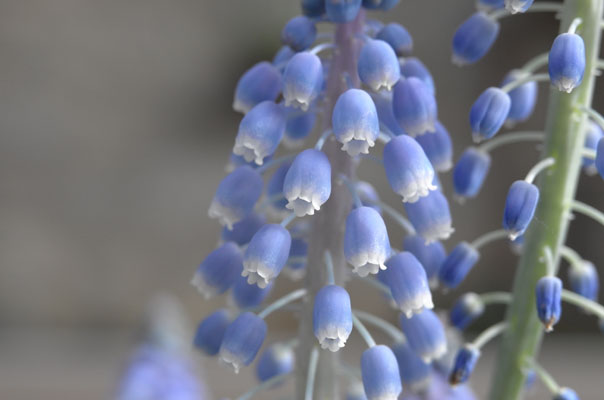



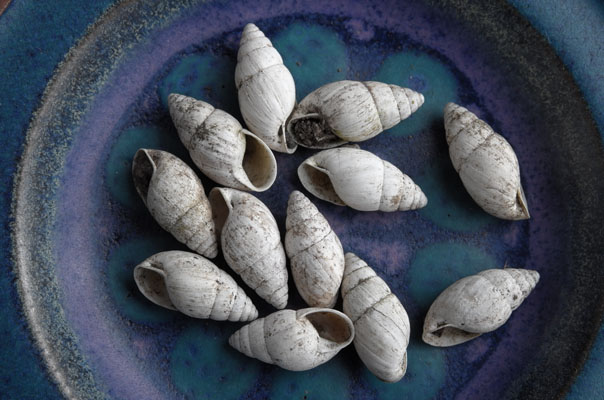
Evaluation Photos
Admittedly, at the beginning, I found it very difficult to find any differences between the photos taken with the cheap close-up lenses, the B+W lens, and the Marumi achromat. One reason for this difficulty may have been that I initially stopped down to f/10 or f/11 for gaining more depth of field. Another reason is that hand-held shots are often not completely sharp, even though they may look so at first sight (and lower magnification). Finally, in order to evaluate corner sharpness, the image plane must be exactly perpendicular to the optical axis. This is hard to achieve without special equipment such as an optical bench. Thus, quick and dirty "evaluations" like mine can only be informal...
Test Settings
- For my "evaluation" photos, I used a tripod and lower ISO values because I found that when using higher ISO values, grain may make it difficult to compare results.
- Using a focal length of 70 mm (equiv.) at the X Vario means that you can only use f/6.4 or slower. To find out whether stopping down has any effect, I also took test photos at f/8 and f/11.
- I used the following configurations: Marumi +5 achromat, B+W +5 close-up lens, cheap +4 close-up lens, stacked +4 and +1 close-up lens (= +5).
- After trying out several test settings, I finally arrived at a setting where I fixed a protractor (set square) to a glass door. The photos more or less look like this:
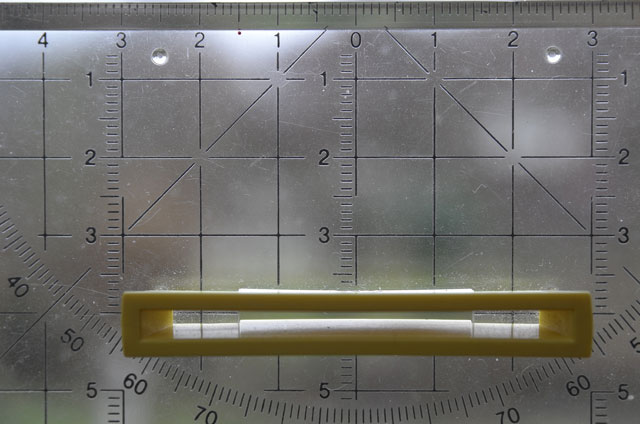
Figure: Example photo (with Marumi achromat at f/6.4)
Samples
Corners (Example)
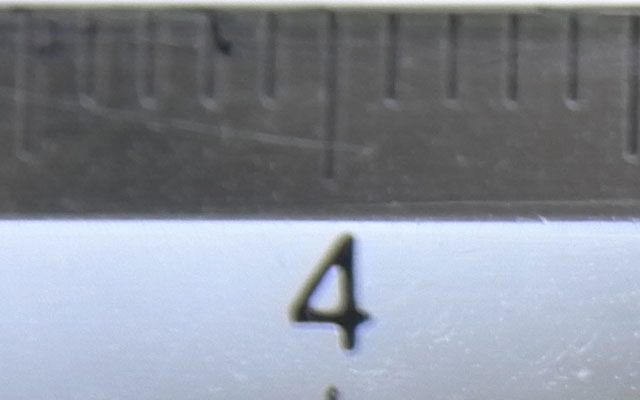
Upper left corner with Marumi +5 achromat (f/6.4)
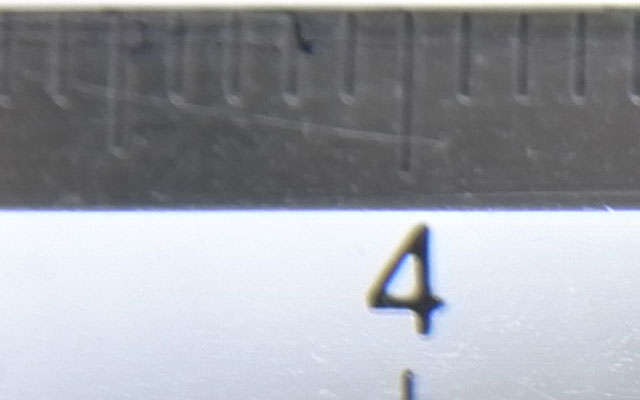
Upper left corner with B+W +5 close-up lens (it is hard to tell, whether the achromat or this lens is better...) (f/6.4)
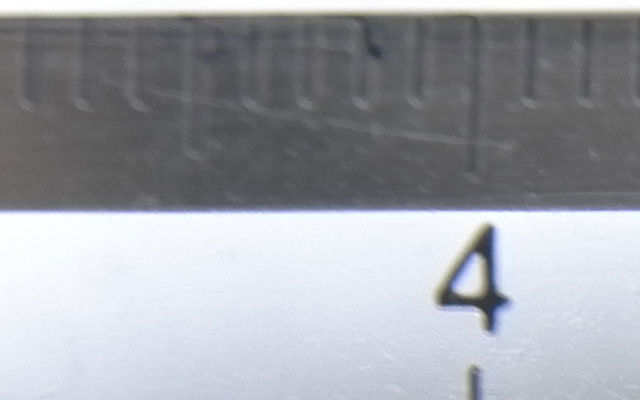
Upper left corner with cheap +4 close-up lens (f/6.4)
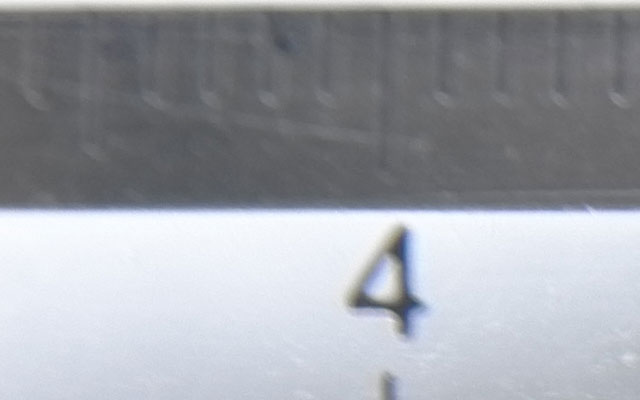
Upper left corner with stacked cheap +4 and +1 close-up lenses (= +5) (f/6.4)
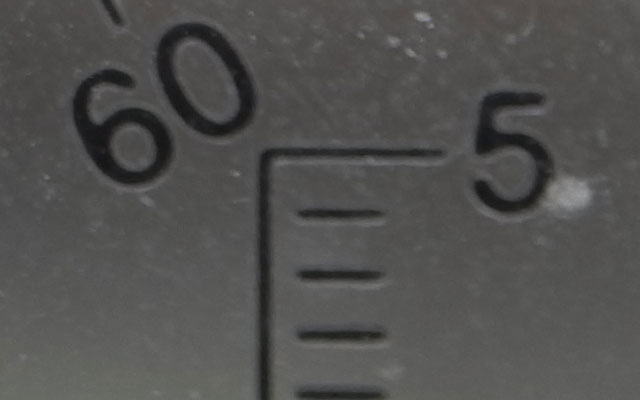
Lower right corner with Marumi +5 achromat (f/6.4)
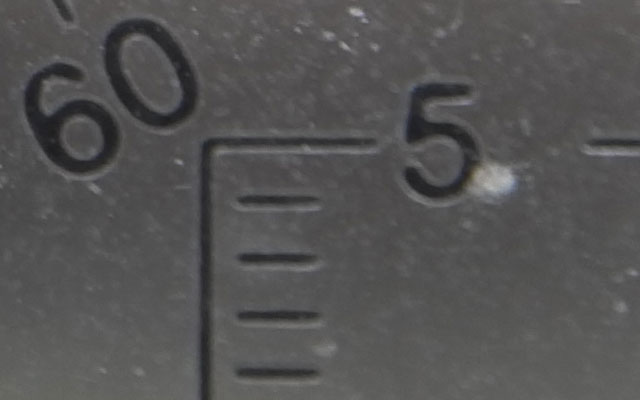
Lower right corner with B+W +5 close-up lens (it is hard to tell, whether the achromat or this lens is better...) (f/6.4)
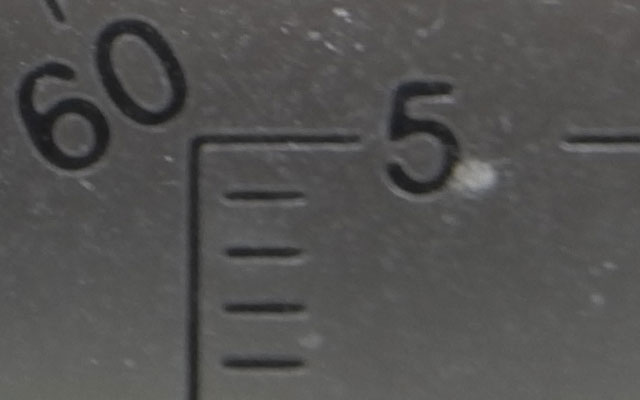
Lower right corner with cheap +4 close-up lens (not much worse either...) (f/6.4)
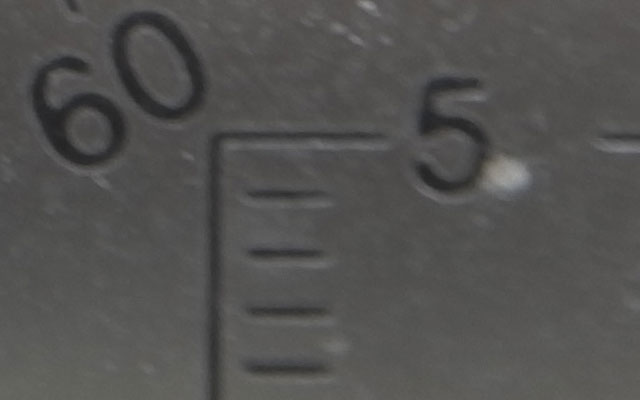
Lower right corner with stacked cheap +4 and +1 close-up lenses (= +5) (f/6.4)
Center
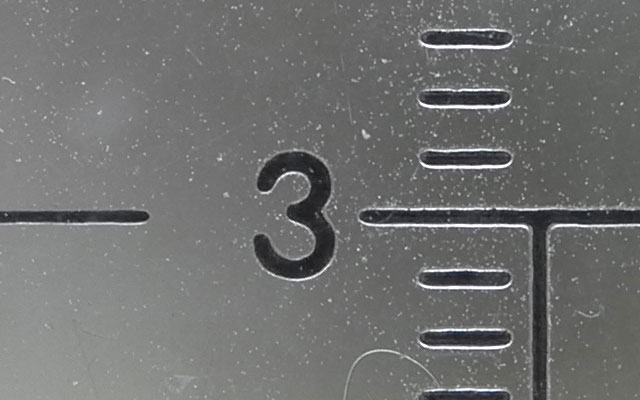
Center with Marumi +5 achromat (f/6.4)
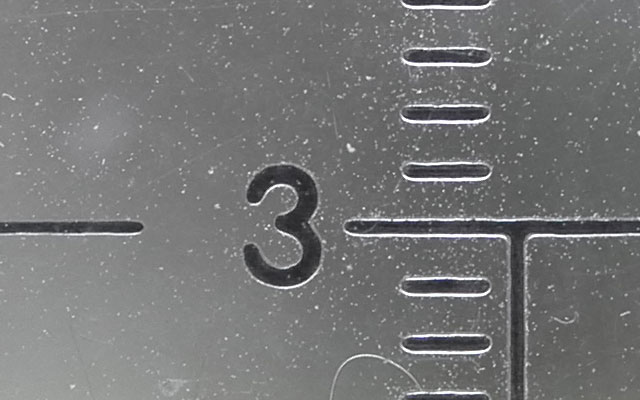
Center with B+W +5 close-up lens (it is hard to tell, whether the achromat or this lens is better...) (f/6.4)

Center with cheap +4 close-up lens (not much worse either...) (f/6.4)

Center with stacked cheap +4 and +1 close-up lenses (= +5) (f/6.4)
Stopping Down (Corner Example)
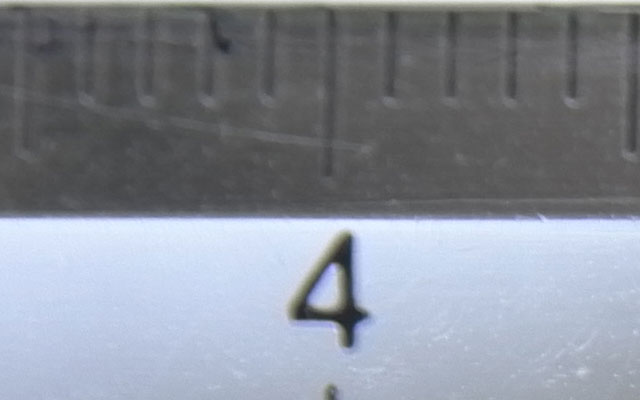
Upper left corner with Marumi +5 achromat (f/6.4)
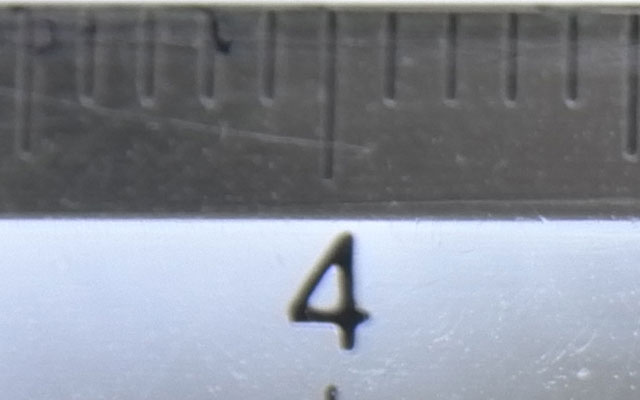
Upper left corner with Marumi +5 achromat (f/8)
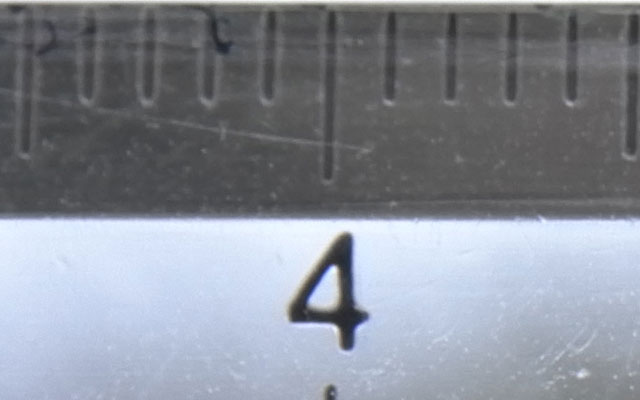
Upper left corner with Marumi +5 achromat (f/11)
Conclusions
My test results were mostly "as expected":
- The Marumi +5 achromat seems to be slightly better than the B+W +5 close-up lens, but this is hard to tell for me. The B+W lens is a little better than the cheap +4 close-up lens.
- Stacking a +4 and a +1 cheap close-up lens to arrive at +5 leads to the lowest quality and image contrast in this setting. Thus, stacking cheap lenses should be avoided.
- Stopping down has indeed a positive effect on corner sharpness (and increases depth of field).
All in all, it is probably advisable to leave such evaluations to professionals who can control the test conditions much better...
Combining Achromat and B+W Lens, Comparison with Ricoh GXR A12-50
Finally, I demonstrate the kinds of motifs that you can shot with a Marumi +5 achromat in combination with a B+W +5 close-up lens. Since combination achieves a magnification of about 0.5, I also compare it with the Ricoh GXR A12-50 macro lens that also achieves a 1:2 (= 0.5) magnification.
Marumi Achromat +5 and B+W Close-up Lens +5 Stacked
The following sample photos demonstrate the kinds of motifs that you can take with a Marumi +5 achromat in combination with a B+W +5 close-up lens:
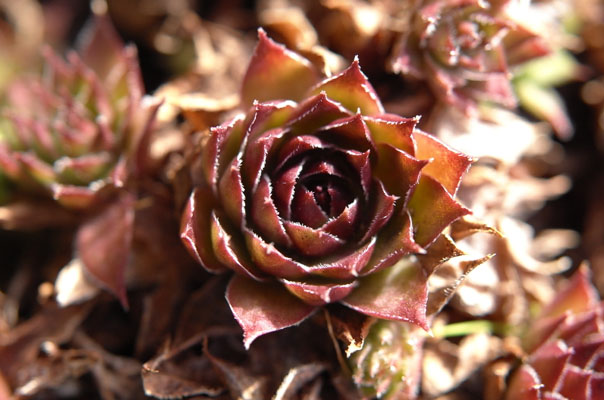
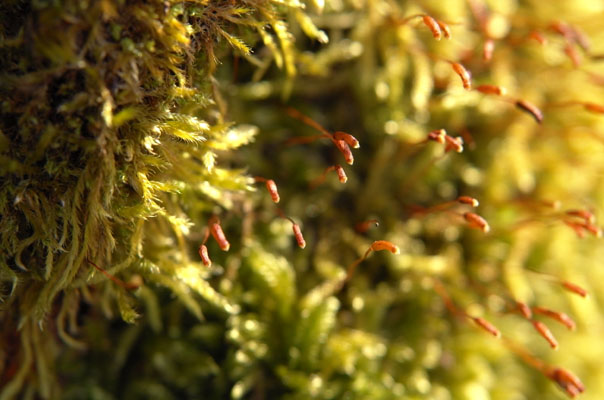


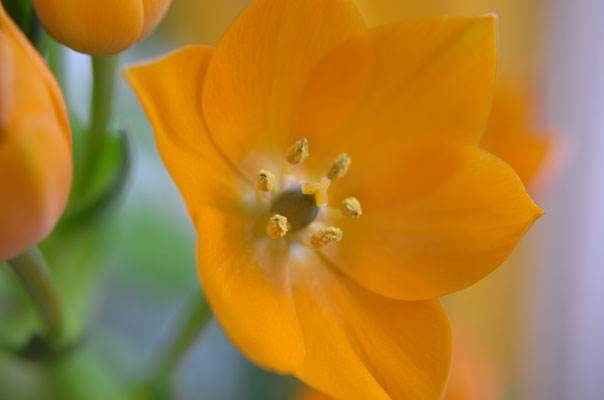
For Comparison: Ricoh GXR A12-50 in Macro Mode
The following photos demonstrate the achievable magnification of a real macro lens (1:2 at maximum), the Ricoh GXR A12-50. It was set to manual focusing and at a distance of 7 cm, thus at maximum magnification. Aperture was set to different value, ISO was set to 200 and 400.
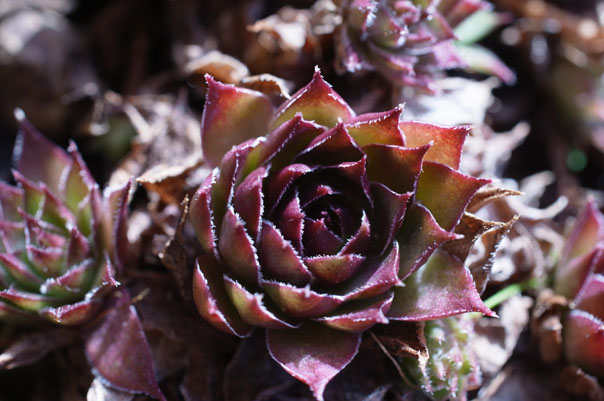

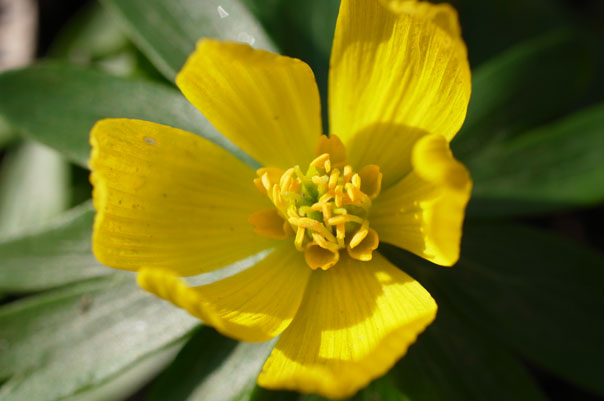

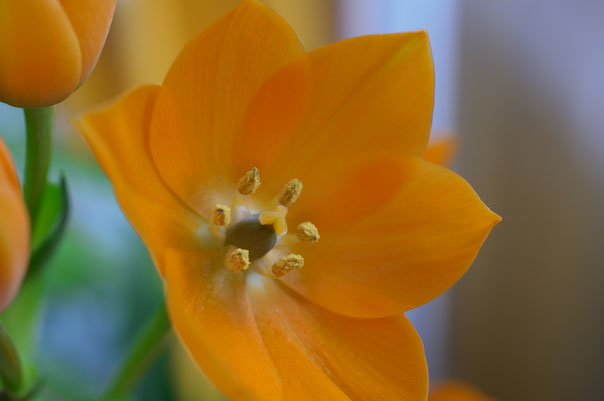
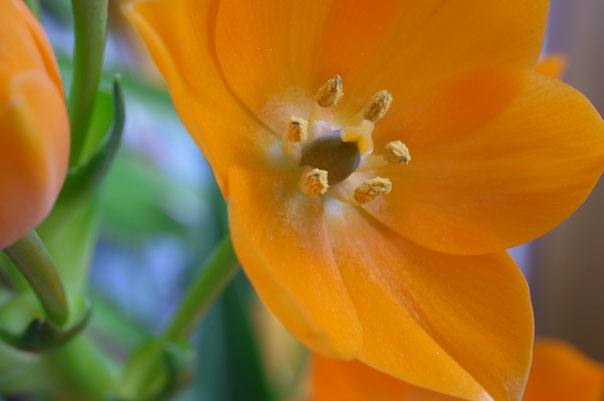
A Misguided Detail Comparison...
Using too high ISO values in one case can make it difficult to compare photos:
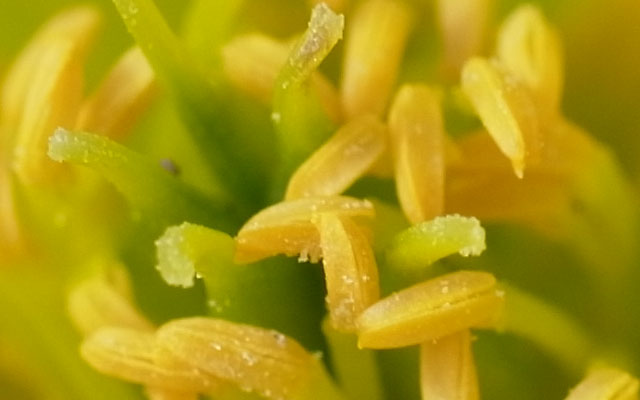
Figure: The Ricoh GXR A12-50 photo looks rather smooth and a little bit fuzzy at ISO 200 and 100%.
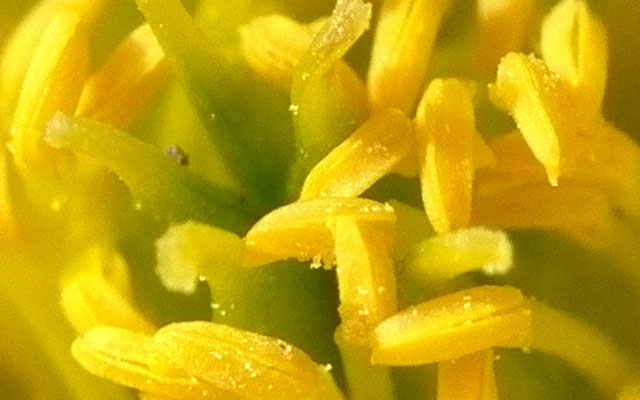
Figure: The Leica X Vario photo looks a bit sharper at 100%, but rather grainy because it was (unnecessarily) taken at ISO 1600.
Detail Comparison...
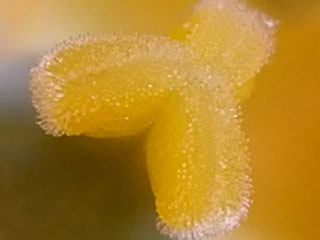 |
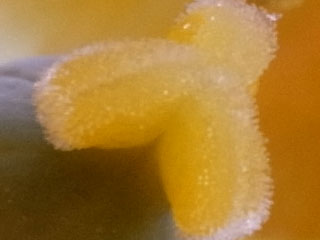 |
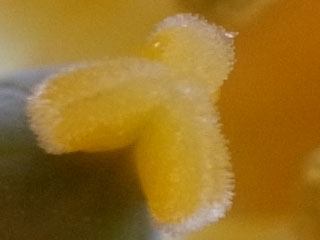 |
Figures: The Leica X Vario photo (top left) looks a bit over sharpened to my taste, while the two Ricoh GXR A12-50 photos look a bit soft. Since the Ricoh has a lower magnification than the stacked lenses on the X Vario, I included two GXR photos: The smaller object belongs to a photo that looks about the same as the X Vario photo.
All in all, the two stacked lenses fare very well on the Leica X Vario at the center. Since , macro shots typically do not need sharp corners, this is sufficient and OK for me.
Marumi Achromat +5 and B+W Close-up Lens +5 Stacked - Take 2 (April 2014)
The following sample photos demonstrate the kinds of motifs that you can take with a Marumi +5 achromat in combination with a B+W +5 close-up lens:


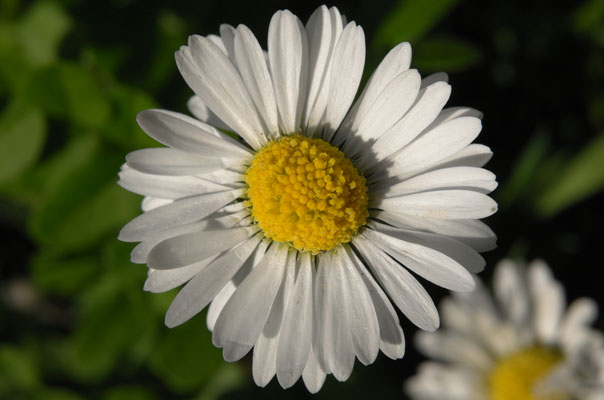
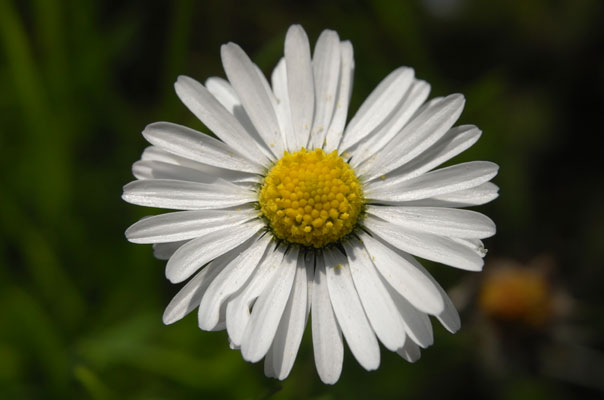
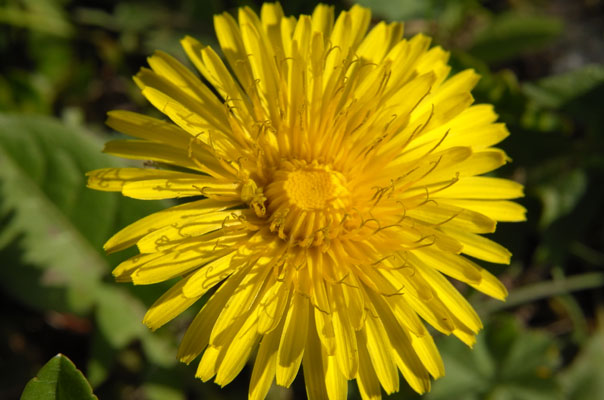


Conclusions
If you see things from a pure price perspective, the cheap close-up lens sets costs a little more than half the price of the B+W +5 close-up lens, which costs half the price of the Marumi achromat (+ the cost of the step-up ring). So, the first question might be whether this price ratio is also reflected in the resulting image quality. From a subjective point of view, I would say "no", but don't we all strive for the optimum, irrespective of its costs?
For hand-held shots (with typically no relevant image elements in the corners) it was more or less impossible for me to make any judgments as to the image quality of the three solutions. Tripod shots, however, revealed that, at least, the cheap close-up lenses were fuzzier in the corners and exhibited less overall contrast than the more expensive lenses. Thus, while I would not say that the cheap lenses are "rubbish", others are better. This, at least, I can state with confidence. Finding image quality differences between the B+W close-up lens and the Marumi achromat, however, was much harder for me - and I am still undecided in this matter. Perhaps, the achromat provides a little more contrast...
I also found that stacking the Marumi achromat and the B+W close-up lens leads to acceptable results in the 1:2 magnification range. But see page Close-Up Lens Experiments - Part 3 for an alternative (the Dörr +10 achromat) with slightly better performance (and - in my case - a comparable price).
| 03.04.2019 |